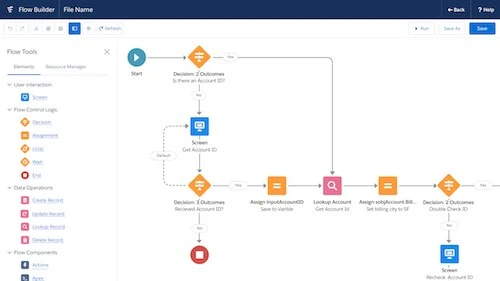In the dynamic landscape of Salesforce development, exceptions are an inevitable facet of the coding journey. Exception handling is not just about mitigating errors; it’s a pivotal strategy that ensures the robustness and reliability of your applications. In this comprehensive discourse, we delve into the intricate realm of Salesforce exceptions, unveiling strategies that empower developers to navigate errors with finesse and fortitude.
The Role of Exception Handling
Exception handling is the art of gracefully managing unexpected scenarios that arise during code execution. Whether it’s an unexpected data input or an unforeseen system issue, handling exceptions ensures that your application continues to function without compromising user experience.
Understanding Salesforce Exceptions
Salesforce exceptions encompass a range of error scenarios, from system-related issues to custom logic errors. These exceptions are categorized into built-in exception classes that provide insights into the nature of the error. Understanding these exception classes is the first step towards effective error management.
DML Exceptions
Data Manipulation Language (DML) operations, such as inserts, updates, and deletes, can encounter exceptions like DmlException or EmailException. Handling these exceptions involves rolling back transactions, notifying users, and ensuring data integrity.
Query Exceptions
SOQL queries can encounter exceptions such as QueryException due to issues like query syntax errors or record unavailability. Handling these exceptions involves graceful degradation of functionality and user-friendly error messages.
Strategies for Effective Exception Handling
Navigating Salesforce exceptions requires a strategic approach to ensure seamless user experiences and streamlined development processes.
Selective Exception Handling
Not all exceptions require the same level of attention. Prioritize exception handling based on their impact on functionality and user experience. Handle critical exceptions aggressively, while gracefully handling non-critical ones.
Custom Exception Classes
Create custom exception classes that encapsulate specific error scenarios. This approach enhances code readability, centralizes error messages, and simplifies debugging.
Logging and Monitoring
Implement robust logging mechanisms that capture exception details, helping developers diagnose issues efficiently. Integrate monitoring tools that provide real-time insights into application health.
Exception Handling Flow: Mermaid Diagram
Visualize the flow of exception handling strategies using the Mermaid diagram syntax:
graph LR
A[Role of Exception Handling] --> B[Understanding Salesforce Exceptions]
B --> C[DML Exceptions]
B --> D[Query Exceptions]
A --> E[Strategies for Effective Handling]
E --> F[Selective Exception Handling]
E --> G[Custom Exception Classes]
E --> H[Logging and Monitoring]Conclusion
In the intricate landscape of Salesforce development, exception handling emerges as a strategic imperative. By understanding the nuances of Salesforce exceptions, developers equip themselves to craft resilient and user-centric applications. Embracing strategies such as selective handling, custom exception classes, and robust logging, developers foster a culture of continuous improvement and seamless user experiences. Every exception encountered becomes an opportunity to refine code, enhance user satisfaction, and uphold the integrity of the Salesforce ecosystem. As you navigate the complexities of coding, let effective exception handling be your guiding principle towards code excellence and application reliability.




